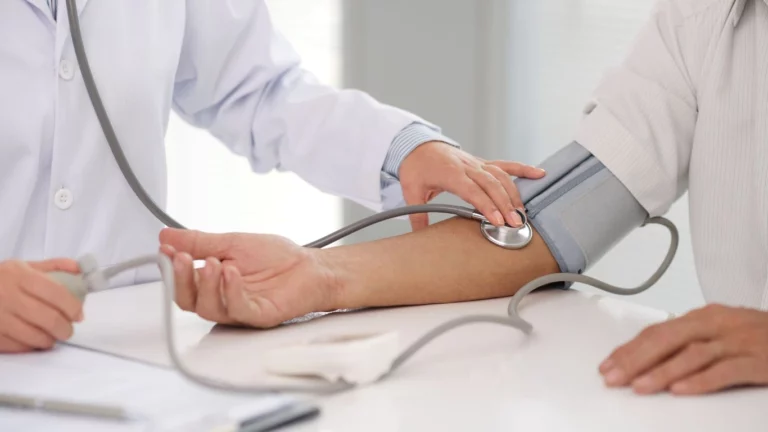How to Identify High-Sodium Processed Foods: A Complete Guide
When you’re living with high blood pressure, or hypertension, managing sodium intake becomes a top priority. We all know that too much salt isn’t good for us, but when it comes to processed foods, it can be really hard to tell just how much sodium is lurking in your meals. As someone who’s worked with countless patients in hypertension management, I’ve seen firsthand how important it is to be able to identify high-sodium processed foods. You’d be surprised at how many foods you might think are healthy, but actually pack a sodium punch that could throw off your blood pressure numbers.
Understanding the Role of Sodium in Hypertension
Sodium is an essential mineral that our bodies need to function properly. It helps maintain fluid balance, nerve function, and muscle contractions. But here’s the thing—too much sodium can be a real problem, especially if you’re dealing with hypertension. For people with high blood pressure, sodium can cause the body to hold onto extra fluid, which can increase the pressure on your blood vessels and heart. This can make managing hypertension even harder.
In fact, research suggests that reducing sodium intake can help lower blood pressure in those with hypertension. That’s why one of the first things I talk to my patients about is how to identify high-sodium processed foods. It can be tricky, though, because sodium hides in some surprising places. You may think you’re making a healthy choice, but the sodium content in certain foods could be sneaking up on you.
How to Identify High-Sodium Processed Foods
One of the most challenging aspects of managing hypertension is learning to spot high-sodium processed foods. I can’t tell you how many times patients come to me saying, “I don’t add salt to my meals, so why is my blood pressure still high?” Well, it’s because processed foods are often loaded with sodium, even if you never touch the salt shaker.
Check the Nutrition Label: A Hidden Goldmine of Information
The first step to identifying high-sodium processed foods is to make it a habit of reading nutrition labels. I can’t stress this enough. The food industry is very clever at hiding sodium in places we might not expect, so the nutrition label will tell you exactly what’s in your food.
Here’s what you should look for:
- Sodium Content per Serving: Look at the milligrams (mg) of sodium listed on the label. The general recommendation for adults is to aim for less than 2,300 mg of sodium per day, though 1,500 mg is even better for those with hypertension.
- Percent Daily Value (%DV): This shows you what percentage of your daily sodium limit is in one serving of the food. Anything with 20% or more is considered high in sodium. Be cautious if you’re eating multiple servings at once!
- Other Names for Sodium: Sometimes sodium is listed under different names like monosodium glutamate (MSG), sodium bicarbonate (baking soda), or sodium nitrite (found in processed meats). If you see these, you know you’re dealing with added sodium.
Watch Out for Common Culprits
When you’re looking to reduce your sodium intake, certain foods should be on your radar more than others. Some of the most surprising offenders are those that don’t even taste salty! Here’s a list of common processed foods that are typically high in sodium:
- Processed Meats: Bacon, sausages, deli meats, hot dogs, and canned meats often contain high levels of sodium used as preservatives. I’ve had many patients who thought a quick sandwich was a good choice, but the sodium content in deli meats can really add up.
- Frozen Meals: The convenience of frozen dinners can be tempting, but these are often packed with sodium to preserve flavor and shelf life. Even those “healthy” options can sneak in tons of sodium.
- Canned Soups and Vegetables: Canned soups are a quick meal option, but many contain far more sodium than you’d expect. Even vegetables, when canned, can have added sodium to enhance taste and preservation.
- Snack Foods: Chips, pretzels, and salted nuts are notorious for being high in sodium. It’s easy to mindlessly snack on these, not realizing how much sodium you’re consuming.
- Condiments and Sauces: Soy sauce, ketchup, barbecue sauce, and salad dressings are loaded with sodium. I’ve had patients who are surprised to learn that just a few tablespoons of soy sauce can pack a whopping 1,000 mg of sodium!

How to Make Healthier Choices
Identifying high-sodium foods is the first step, but it’s also important to know how to make healthier choices. You don’t have to completely avoid all processed foods (though reducing them is key), but there are plenty of ways to substitute healthier options that won’t spike your blood pressure.
- Cook at Home: The best way to control your sodium intake is to prepare meals from scratch. Fresh vegetables, lean proteins, and whole grains are naturally low in sodium.
- Choose Low-Sodium Versions: Many processed foods come in low-sodium or no-salt-added versions. If you can’t find them, try buying items like canned beans or vegetables, and rinse them to wash away some of the sodium.
- Flavor with Herbs and Spices: Instead of using salt, try seasoning your food with herbs, spices, garlic, or lemon juice. These can add lots of flavor without the sodium.
- Reduce Your Dependence on Pre-packaged Foods: The less you rely on pre-packaged meals, the better. Cooking from scratch means you have full control over what’s going into your food.

Understanding Sodium’s Impact on Your Health
If you’ve been managing your blood pressure for a while, you might already know that sodium doesn’t just affect your blood pressure on its own. It’s part of a complex system that influences how your heart works, how your kidneys filter blood, and how much fluid your body holds onto. I often tell my patients that it’s not just about cutting out salt—it’s about understanding how sodium affects your entire body, especially in relation to hypertension.
When you eat foods with too much sodium, your body retains more water to balance out the higher concentration of sodium in your bloodstream. This increase in fluid raises the volume of blood in your arteries, making your heart work harder to pump blood through your body. Over time, this extra pressure can cause significant strain on your cardiovascular system, leading to more serious health issues like stroke, heart disease, and kidney damage.
How to Avoid Hidden Sodium in Your Diet
By now, you’re probably getting the idea that cutting sodium from your diet requires a little detective work. Processed foods are the main offenders, but sodium can sneak its way into some pretty unexpected places. So, how can you avoid these hidden sodium bombs without completely overhauling your life? I’m glad you asked. Let me share a few tips I’ve given to my patients that have made a huge difference.
Look Beyond the Obvious
It’s easy to point to chips, canned soups, or deli meats and say, “Yeah, I know those are high in sodium.” But some foods that seem healthy can have sneaky amounts of sodium packed into them. For example, bread. You wouldn’t think a slice of whole-grain bread could be high in sodium, right? But many bread products, including “healthy” options like whole wheat, can contain 100-200 mg of sodium per slice. If you’re eating a sandwich with two slices of bread, plus a sodium-rich condiment like mustard or mayo, it can really add up.
- Canned Vegetables: Even though they’re a quick and convenient option, canned vegetables often contain added salt to preserve their shelf life. Opt for fresh or frozen veggies when possible.
- Salads and Dressings: I’ve seen a lot of patients go for salads thinking they’re making a health-conscious choice, only to drown their greens in high-sodium dressings. Even low-fat or “light” versions of dressings can pack a punch.
- Cheese: A lot of cheeses, especially processed ones, are pretty high in sodium. Go for fresh cheese varieties or use smaller amounts of stronger-tasting cheese like feta or Parmesan, which gives more flavor with less sodium.

Prepare Your Own Snacks
One of the best ways to cut out sodium from your diet is by avoiding packaged snacks altogether. Sure, they’re convenient, but they’re often packed with hidden salt, sugar, and preservatives that you don’t need. I encourage my patients to prepare their own snacks at home. It’s not only healthier, but it’s also a fun way to be more mindful of what’s going into your body.
For example, instead of buying a pre-packaged bag of salted nuts, try roasting your own at home. You can control the amount of salt (or leave it out entirely) and experiment with herbs like rosemary, thyme, or cinnamon for flavor. Fresh fruit, veggie sticks, or homemade hummus can also serve as great alternatives to those high-sodium prepackaged options.
- Make Your Own Granola: Many store-bought granolas are full of sugar and salt. You can easily make your own by combining oats, nuts, seeds, and a touch of honey or maple syrup. You’ll have complete control over the ingredients.
- Veggie Chips: Instead of reaching for that bag of salty potato chips, try baking your own veggie chips with a dash of olive oil and your favorite herbs.
- Yogurt with Fresh Fruit: Skip the sugary, sodium-packed fruit-on-the-bottom yogurts. Instead, add fresh fruit to plain yogurt for a healthy, balanced snack.
Choose Low-Sodium Alternatives
Thankfully, food manufacturers are becoming more aware of the need for healthier options, which means there’s now an entire market of low-sodium alternatives to some of your favorite processed foods. These days, you can find low-sodium or sodium-free versions of pretty much everything: soups, broths, chips, crackers, and even canned vegetables. Yes, it might take a little extra effort to look for these options, but your heart (and your blood pressure) will thank you later.
Something I tell my patients all the time is that even if you can’t find a completely sodium-free option, you can still make better choices by going for products labeled as “low-sodium” or “no added salt.” For instance, instead of buying a can of regular tomato soup, which can contain over 1,000 mg of sodium per serving, try a low-sodium version, which may only have around 140 mg per serving. That’s a big difference!

Be Cautious with Fast Food
Ah, fast food—the ultimate convenience, but also a huge culprit when it comes to sodium overload. In fact, many fast food chains pack more sodium into a single meal than the recommended daily intake. From burgers and fries to wraps and breakfast sandwiches, fast food is often a sodium bomb waiting to go off in your body.
If you find yourself relying on fast food often, don’t panic—there are still ways to make smarter choices. Many restaurants now offer nutrition guides online, so you can check the sodium content of your meal before you order. Opt for grilled or baked options over fried, ask for sauces and dressings on the side, and steer clear of supersized portions. You’d be surprised how much sodium you can save just by making small adjustments.
- Choose Grilled Over Fried: Grilled chicken or fish is usually a better option than fried, which is often loaded with sodium and unhealthy fats.
- Skip the Fries: Fries can be loaded with salt, so consider ordering a side salad or a piece of fruit instead.
- Dressings and Sauces on the Side: Sauces can add a lot of extra sodium. Ask for them on the side, and use just a little bit at a time.

Practical Tips for Reducing Sodium Without Sacrificing Flavor
By now, I hope you have a clearer understanding of how sneaky sodium can be and how it can affect your blood pressure. But the real challenge comes in when you need to make lasting changes to your eating habits. It can feel overwhelming, especially when you’re used to eating out or grabbing processed foods on the go. But trust me, it’s totally doable! Here are some practical tips I’ve shared with my patients to make reducing sodium easier while still enjoying great meals.
1. Use Fresh Ingredients Whenever Possible
When I work with patients who have hypertension, one of the first recommendations I make is to start using more fresh ingredients. I get it—life is busy, and it’s tempting to grab a quick snack or meal that’s processed. But when you cook from scratch, you have total control over what goes into your food. And let me tell you, fresh food just tastes better!
For instance, using fresh tomatoes for a homemade marinara sauce instead of store-bought pasta sauces loaded with sodium can make a world of difference in your blood pressure—and your taste buds! Fresh fruits and veggies are naturally low in sodium and packed with nutrients, so they should be your go-to for snacks, sides, and salads. Plus, they’re usually more flavorful than canned or frozen versions.
2. Get Creative with Spices and Herbs
If you’re worried that cutting back on salt means your food will be bland, think again! There’s a whole world of spices and herbs out there that can elevate your cooking without the sodium. I’ve worked with countless patients who are amazed at how flavorful their meals can be once they start experimenting with fresh herbs and spices.
- Garlic and Onion: These two can completely transform a dish. Try roasting garlic for a sweet, mellow flavor, or use onion powder as a substitute for salt.
- Lemon and Lime: A squeeze of fresh lemon or lime juice can brighten up any dish, whether you’re cooking vegetables, fish, or even chicken.
- Herbs like Basil, Parsley, and Cilantro: Fresh herbs are a great way to add layers of flavor. They’re naturally free of sodium and can make your meals feel like gourmet dishes.
- Spices like Cumin, Paprika, and Turmeric: Spices not only bring vibrant color but also add depth to your cooking. Try adding turmeric to rice or cumin to stews for that savory, rich flavor.

3. Practice Meal Prepping to Control Sodium
Another trick I’ve found incredibly helpful for managing sodium intake is meal prepping. It sounds like a lot of work, but trust me, it’ll save you time—and sodium—later in the week. Meal prepping helps you stay on track with your eating habits and ensures you always have a healthy, low-sodium meal ready to go.
Start by cooking in bulk on weekends—think large batches of rice, grilled chicken, roasted vegetables, or a big salad. Then, portion out your meals into containers so you can grab them on the go. Not only does this help with portion control, but it also cuts down on the temptation to reach for those high-sodium takeout options when you’re in a rush. Plus, you get the satisfaction of knowing exactly what’s in your food.
4. Drink Plenty of Water
When you’re reducing sodium, it’s also important to stay hydrated. Water helps flush excess sodium from your system and keeps your kidneys functioning properly. I always remind my patients that water isn’t just essential for quenching thirst—it’s a key player in maintaining healthy blood pressure.
Try to drink at least 8 glasses of water a day, or more if you’re active. If plain water feels too boring, you can infuse it with slices of cucumber, lemon, or mint for a little extra flavor. Staying hydrated will not only help with sodium levels but will also help with overall digestion and energy levels.
Addressing Challenges: Dining Out and Social Situations
Let’s be honest—eating out can be a challenge when you’re trying to cut back on sodium. Whether you’re at a restaurant or attending a family gathering, it can be hard to avoid those high-sodium dishes that seem to pop up everywhere. But don’t worry, with a little planning, you can still enjoy eating out while keeping your sodium intake in check.
Many restaurants now provide nutritional information online, so take a minute to check the menu before you go. Look for dishes that are grilled, baked, or steamed instead of fried, as frying often adds a lot of sodium. Opt for meals that come with dressing or sauces on the side, so you can control how much you use.
Also, ask for modifications. I’ve seen patients make small changes like swapping fries for a side salad, asking for no added salt in the preparation of their dish, or requesting low-sodium broth for soups. Trust me, most restaurants are happy to accommodate these kinds of requests, and they don’t have to ruin your dining experience.
Social Gatherings and Family Meals
Family barbecues, parties, or social gatherings can be tricky when everyone else is enjoying foods that are high in sodium. But remember, you’re in control of what you eat. Before attending, try eating a healthy snack or meal beforehand so you’re not starving when you arrive. This can help prevent you from mindlessly snacking on salty chips and appetizers.
If you’re at a party and there’s a buffet of salty snacks, focus on the fresh fruits and veggies available. If there’s a salad, ask for dressing on the side. And don’t be afraid to bring your own low-sodium dish to share! Not only will you have something safe to eat, but you’ll also be setting a great example for your friends and family.

References
For more information on managing hypertension and sodium intake, I recommend checking out the following resources:
Disclaimer
The information in this article is intended for informational purposes only and is not a substitute for professional medical advice, diagnosis, or treatment. Always seek the advice of your physician or other qualified health provider with any questions you may have regarding a medical condition. Never disregard professional medical advice or delay in seeking it because of something you have read in this article.

Dr. Gwenna Aazee is a board-certified Internal Medicine Physician with a special focus on hypertension management, chronic disease prevention, and patient education. With years of experience in both clinical practice and medical writing, she’s passionate about turning evidence-based medicine into accessible, actionable advice. Through her work at Healthusias.com, Dr. Aazee empowers readers to take charge of their health with confidence and clarity. Off the clock, she enjoys deep dives into nutrition research, long walks with her rescue pup, and simplifying medical jargon one article at a time.






